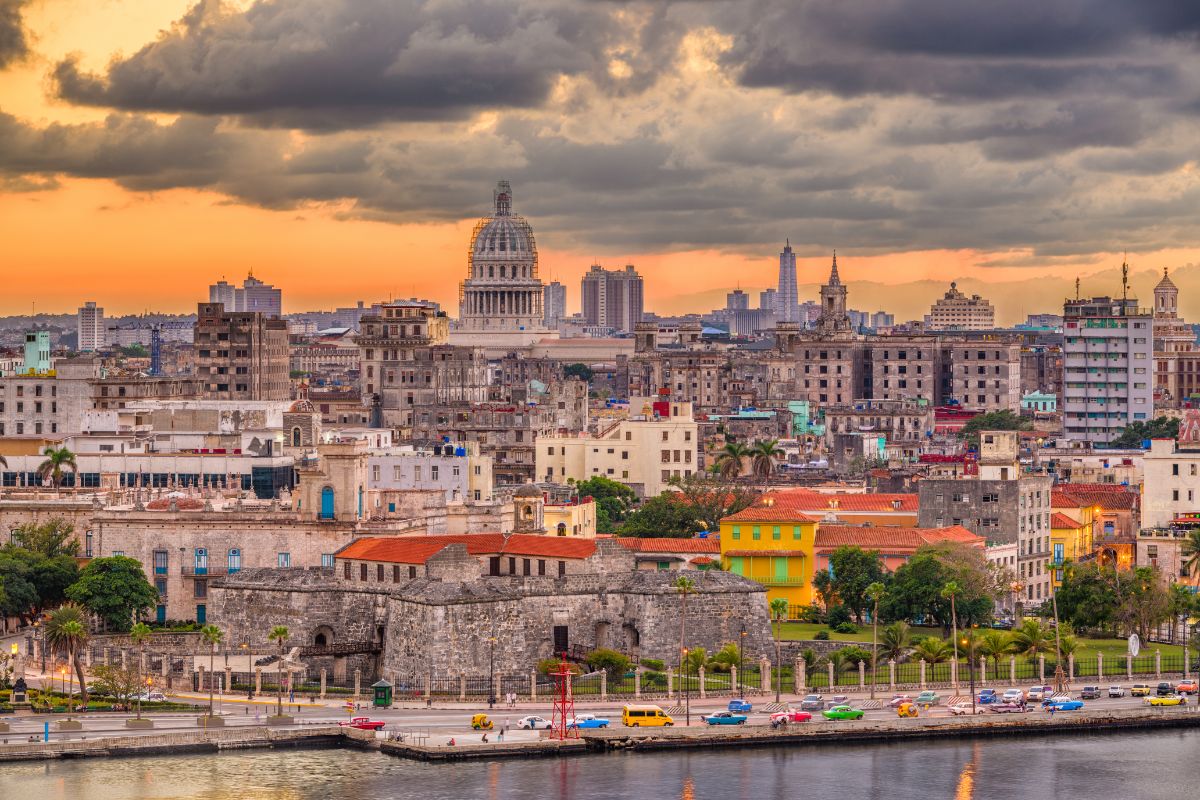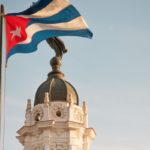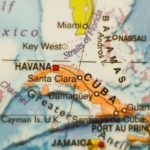The Cuban Missile Crisis was one of the tensest periods during the Cold War, and the closest that the conflict between the United States and the Soviet Union came to all-out warfare.

After the Soviet Union placed nuclear missiles in Cuba in 1962, tensions between the two global superpowers reached a peak and it seemed that nuclear war was inevitable.
But after the Cuban Missile Crisis was finished and the Cold War ended, what happened to the nuclear warheads the USSR had sent to Cuba? And, more importantly, are they still there?
Don’t worry, because we’ve got all the answers right here.
In this article, we’ll take a look at whether or not Cuba still has nuclear warheads, as well as the reasons why they were sent there to begin with.
So let’s get started, and find out whether Cuba still has nuclear weaponry.
Why Did Cuba Have Nuclear Warheads?
First things first – why did Cuba have nuclear warheads in the first place? In order to understand why, we’ll have to look at some history.
The Cuban Missile Crisis was a major confrontation in the Cold War, taking place in 1962 between the United States and the USSR in conjunction with Cuba.
It came about after the Bay of Pigs Invasion (where US-funded Cuban exiles attempted to invade Cuba in opposition to Fidel Castro), when the Soviet Union supplied Cuba with nuclear warheads to deter the US from any more acts of aggression against Cuba.
When United States spy planes flew over Cuba and saw sites where nuclear missiles were being built, it sparked a tense confrontation between the US and the Soviet Union, who had provided the warheads.
This led to rising tensions between the three nations (especially the United States and the Soviet Union), US president John F. Kennedy declared the crisis a national emergency.
The crisis marked the closest point of the Cold War devolving into all-out nuclear warfare.
Over the 35-day period of the Cuban Missile Crisis, constant threats and negotiations between the US and the USSR eventually led to an agreement being struck between the two superpowers and the eventual end of Cuba’s participation in the Cold War.
Fortunately, this meant that the nuclear threat facing all three countries was resolved without any of these warheads being launched, and the countries never declared war on each other.
Despite its name, the Cold War wasn’t what we would consider to be an actual war; no direct militaristic action took place, and the two major players (the US and the Soviet Union) never directly declared war against each other.
Instead, the Cold War was more of a tense rivalry between these two global superpowers, and any actual fighting instead took place in various Third-World countries throughout Asia, Africa, Latin America and the Middle East through a series of proxy wars.
Does Cuba Still Have Nuclear Weapons?
So now that we’ve covered why Cuba had nuclear warheads to begin with, does Cuba still have any of these nuclear weapons?
You’ll undoubtedly be relieved to hear that the answer is no – Cuba no longer has any nuclear warheads.
After the end of the Cuban Missile Crisis and the resolution of the Cold War in Cuba, the stockpile of nuclear warheads in Cuba was removed and shipped back to the USSR.
Similarly, the United States’ stockpile of nuclear missiles in Turkey (which had been placed there due to its proximity to Russia for the same reasons) was also removed.
Thus Cuba has no nuclear weapons. The Cuban Missile Crisis de-escalated and nuclear war was avoided.
Following the resolution of the crisis, Cuba has not made any attempt to create or acquire any new nuclear weaponry.

Additionally, Cuba doesn’t possess any biological or chemical weaponry, and also does not have any long-range ballistic missiles.
In 2002, Cuba entered into the Treaty on the Non-Proliferation of Nuclear Weapons, also known as the Non-Proliferation Treaty (or NPT for short).
This is an international agreement between 191 countries that is intended to prevent the spread and creation of nuclear weaponry due to the massive threat it poses to international safety.
Its nuclear stockpile has been removed and no further nuclear warheads have been received or created by Cuba.
Cuba remains completely nuke-free to this day. Cuba also does not have any long range conventional ballistic missiles.
In fact, the United States and Russia are the two main nuclear threats, with a combined total of over 10,000 nuclear warheads between the two countries (although both countries signed the NPT in 1968).
How Many Nukes Did Cuba Have?
There are some differing reports on just how many nuclear warheads Cuba was in possession of during the Cuban Missile Crisis, and it’s hard to tell what the actual figures were.
However, there were at least 100 nuclear weapons in Cuba’s possession at the height of the crisis – approximately 80 long-range missiles loaded with nuclear warheads, along with 10 to 15 short-range nuclear rockets and at least 6 nuclear bombs.
This stockpile definitely justified the United States’ uneasiness, especially since Cuba is located less than 450 kilometers from Miami and just over 200 kilometers from Key West, Florida.
Because of this close proximity, the US would be unable to detect incoming nuclear missiles from Cuba in time to launch any form of defense.
The US would have also had difficult in launching any type of counter attack.
What Would Have Happened If The Cuban Missile Crisis Turned Nuclear?
Because of the massive stockpiles of nuclear weapons between the United States, the Soviet Union, and Cuba, any nuclear attack would have had devastating repercussions for all three nations involved (as well as the world at large).
If the Cuban Missile Crisis had instead resulted in Cuba and the USSR launching their nuclear warheads at the US, major cities would have been completely destroyed and millions of people would likely have been killed.
In turn, retaliation from the US would have led to even further destruction.
Russia would likely have been completely or near-totally demolished by the massive number of nuclear warheads launched at them, and Cuba would fare even worse.
in fact, Fidel Castro himself believed that every person in Cuba would likely die in the event of a nuclear war between the US, Cuba and USSR.
The potential consequences of the Cuban Missile Crisis would have been devastating.
This fact was the main factor behind the rising tensions between the US and the Soviet Union.
Ironically, it is also what prevented the conflict from turning nuclear, and was what kept the Cold War ‘cold’.
Because of the immense destruction that a nuclear conflict would bring, the agreement made between the US and the USSR meant the removal of all nuclear warheads from Cuba (as well as Turkey), resolving the missile crisis and eventually leading to the end of the cold war some 30 years later.
Luckily, this action prevented the US and the Soviet Union from declaring war against each other and dissolved the nuclear tensions surrounding Cuba.
Final Thoughts
The Cold War and the Cuban Missile Crisis may have dangled the threat of global nuclear war over our heads, but you can take some comfort in knowing that Cuba no longer has the stockpile of nuclear warheads that the USSR provided them back at the peak of the conflict.
On top of that, the country has made no further effort to acquire more nuclear weaponry, and it’s pretty safe to say that Cuba no longer poses a nuclear threat following the end of the Cuban Missile Crisis.
So while Cuba’s stockpile of nuclear warheads led to one of the tensest parts of the Cold War and brought the US and the Soviet Union to the brink of war, modern-day Cuba has no nuclear weaponry at all, and shows no interest in possessing any nuclear warheads in the future.
- What Is The Largest Island In Cuba? - September 19, 2022
- Havana – Why Is It Cuba’s Most Exciting City? - September 19, 2022
- Cheapest Time To Visit Cuba (Ultimate Guide) - September 19, 2022








